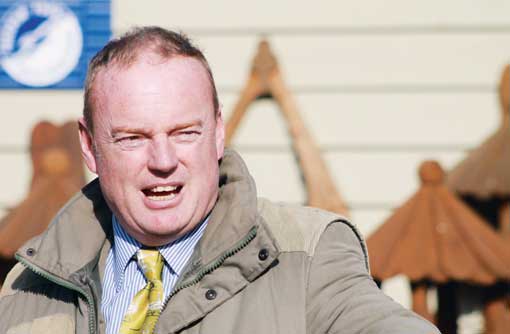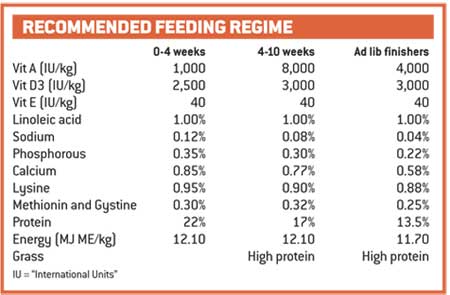Getting it right with goslings, particularly with new entrants to the sector

Michaelmas and Christmas goose producers will be receiving their goslings in the coming weeks – many of them from leading supplier Norfolk Geese.
While many are established customers with years of experience, there are also new entrants to the sector and these need to be aware of the basics, says managing director Eddie Hegarty.
His first piece of advice for anyone is to establish their market first, and ensure they have sufficient facilities – or access to facilities – for slaughtering and processing the birds when they are ready to market.
“Do your research before you do anything else,” says Mr Hegarty, who is also chairman of British Goose Producers. “Understand all that is involved in processing and getting your product to customers. The best thing to do is to attend one of our goose walks the year before you start, to meet other producers.”
Newcomers, who often already have a traditional turkey or other seasonal enterprise on the go, are also urged to start off small. While the ideal flock size is reckoned to be between 200 and 300 geese, first-time goose producers would be better off with, say, 25 birds – and certainly no more than 50.
“It is essential to get the quality right. Christmas is the most important meal of the year and if you fail to give your new customers what they want in the first year, you won’t get another chance.”
All newcomers are sent the Norfolk Geese management guide, which sets out the basics for successful goose production, with a particular focus on getting it right with goslings.
Housing
A flock of 100 geese will require a shed of about 32sq m by the time they reach four weeks of age, although this space will need to be reduced when the birds are younger.
For example, day-old goslings arriving on the farm will need just 8sq m for this flock size, contained within a straw bale or hardboard surround to eliminate drafts. The available area should be gradually increased to allow the goslings to run around and strengthen their legs.
A bedding of straw or dust-extracted wood shavings to a depth of at least 75mm should be provided, with the house temperature raised to 25C for the new arrivals. Concrete floors should be warmed before bedding down, Mr Hegarty advises.
“For large numbers of geese we recommend using gas brooders, though a heat lamp is sufficient for smaller numbers.”
If the goslings are too hot, they will tend to cluster around the edges of the pen and may be gasping. If they are too cold, they will be gathered together in a bunch under the heat source. The ideal is somewhere in between.
Temperature can start to be reduced by 2-3C a day from day five onwards, and turned off during the day once the outside temperature reaches about 23C. Ventilation should also be increased, to clear ammonia and reduce humidity.
Food and drink
Water must be available at all times – both for drinking and for the goslings to cover their eyes and clear their nostrils – and the less distance they have to travel to find it the better. “We recommend a depth of 2cm for day-olds and 6-10cm for adults.”
First water should be at room temperature, with soluble vitamins to help the goslings recover from their journeys.
Similarly, feeders need to be easy to find and height adjustable. At day-old, some chick grit can be mixed in to aid digestion. A little bit of grass can also be introduced into the diet from about day eight.
“Feeding is all about maintaining enough energy to maintain the correct body temperature, supplemented by protein, vitamins and minerals in small doses.” (For more details, see table below).
Health and management
If any goslings appear weak on arrival, it is probably because they have used up their yolk sacs. If this is the case, spray them with a fine mist to rehydrate them.
Any goslings with weak legs or curled up toes may have vitamin D deficiency and will need extra vitamins, calcium and minerals.
“All our breeding stock are vaccinated every year for parvovirus – which passes protection on to their goslings,” says Mr Hegarty. “In the unlikely event that there was an outbreak, then the best option is to destroy the flock, disinfect the premises and start again.”
Mr Hegarty also stresses the importance of establishing a relationship with the goslings from the day they arrive, visiting them regularly, talking to them, handling them and avoiding startling them in any way.
“A calm surrounding with plenty of contact and no startling effects will reward you with a tame flock and a reduced mortality rate.”

